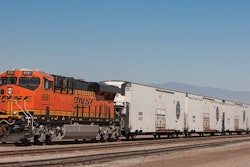The U.S. Citizenship and Immigration Services (USCIS) approved construction of the Louisiana International Gulf Transfer Terminal Regional Center (LIGTT RC) which is expected to become the largest transshipment facility in the United States. The facility is intended to open a new supply chain via the Mississippi River and its tributaries, reaching 32 states and Canada (over 14,500 miles of inland waterways).
The terminal will be located just east of the mouth of the Mississippi River at Mile 0 off Louisiana’s Gulf Coast. Because of its location in deep water (at a minimum of 70 feet), it will be able to accommodate the Post-Panamax vessels expected to begin transiting the expanded Panama Canal. It will also be able to handle the larger Super Post-Panamax vessels currently in operation. The terminal will employ a hub and spoke system for transporting goods to and from America’s heartland, expanding America’s shipping capacity by more than 2 million twenty-foot equivalent units (TEUs) annually – with the goal of ultimately expanding capacity up to 3.5 million TEUs annually.
“With this terminal in place, America will be ahead of the curve and able to keep pace with modern international trade, particularly as the Panama Canal undergoes its historic, first-ever expansion,” said Admiral James Milton Loy, former deputy secretary of the U.S. Department of Homeland Security and former commandant of the U.S. Coast Guard. “The Gulf of Mexico provides an ideal location to maximize shipping routes through other ports and inland waterways that until now have been largely untapped.”
In support of the U.S. Department of Homeland Security (DHS)’s goal of ultimately screening 100 percent of all cargo entering the country, the terminal has set its own goal to have all arriving containers electronically screened by DHS. After screening, goods will be delivered to the Midwest and other ports in the Gulf and around the country via specially designed container-carrying vessels. These vessels, equipped with cranes, require just a 9-foot draft and travel upriver through the Mississippi River and its tributaries.
A number of federal agencies have expressed interest in eventually having a presence at the facility, including the U.S. Department of Defense, the U.S. Department of Veterans Affairs, the U.S. Department of Homeland Security, the U.S. Transportation Command, the U.S. Drug Enforcement Administration and the U.S. Department of Labor. Other interested stakeholders include the Army Corps of Engineers, the U.S. Coast Guard, the U.S. Environmental Protection Agency, the U.S. Department of Transportation, the U.S. Department of Commerce and the U.S. Chamber of Commerce.
The terminal is expected to increase America’s shipping efficiency at a time when the expanded Panama Canal is expected to introduce larger ships, which will hold up to four times the number of containers as current vessels. Ports that accept these massive ships require a minimum 50-foot draft to navigate and dock. The new terminal will not require dredging because of its location in permanently deep water (70 feet minimum) and its ability to handle the new 18,000 container vessels. The terminal’s flexible design and initial 500-acre site allow for expansion as needed, as demand grows over time.
The terminal is also expected to increase the reliability and efficiency of the shipping process by enabling some cargo to travel to inland areas by LIGTT’s self-propelled specialized container-carrying vessels, moving along America’s internal waterway systems. It will also reduce the need for ships to idle because they will not have to wait for a berth slot; the terminal will be a world-class green-built facility. To read more, click HERE.


















